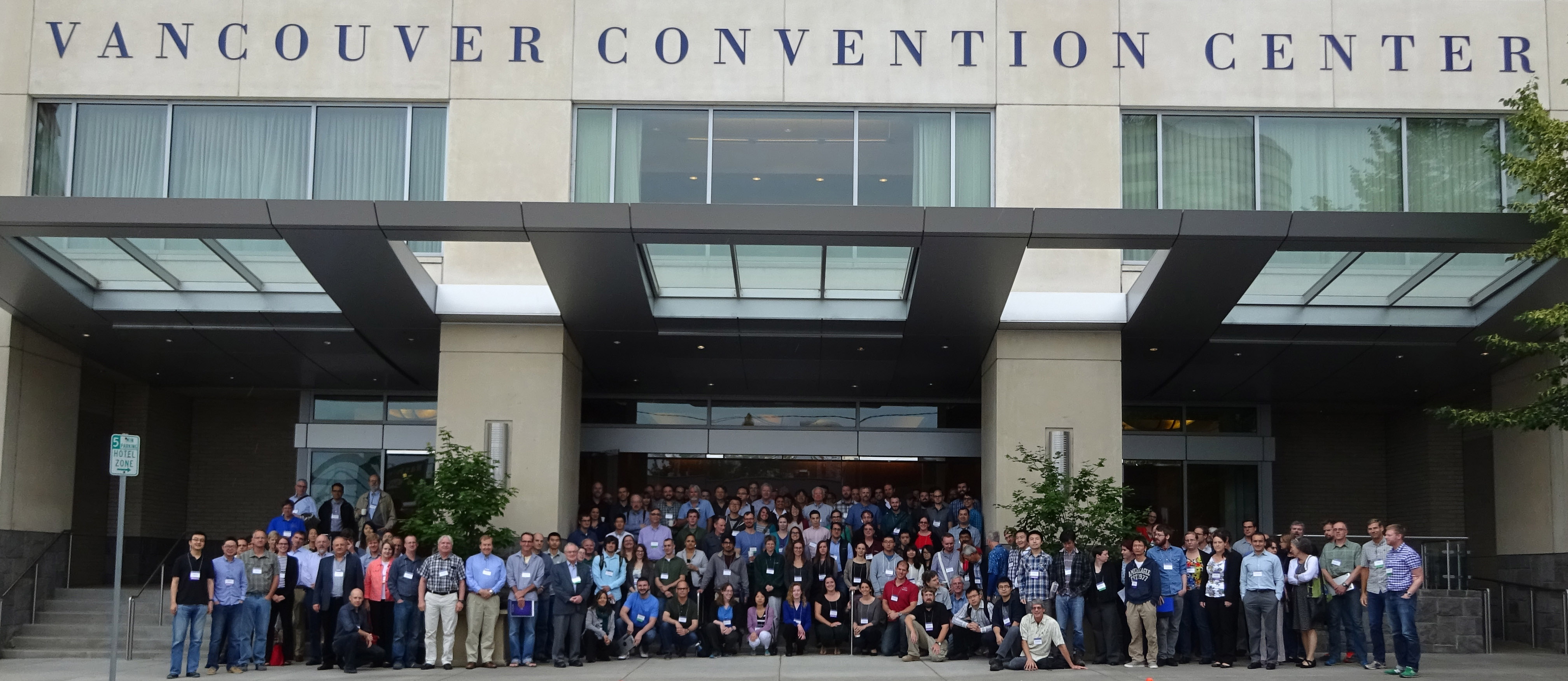by Perle Dorr, Danielle Sumy, and Justin Sweet, IRIS - Summer 2016
Over the last 30 years, advances in instrumentation and analytical techniques have facilitated new developments in seismology, including applications in non-traditional areas and the integration of seismology with related disciplines in Solid Earth sciences. The 2016 IRIS Workshop, in Vancouver, Washington, hosted more than 230 participants who engaged in presentations, posters, and discussions on these cutting-edge topics.
The *Science Planning Committee, with assistance from members of the seismology community, developed a program consisting of seven plenary sessions, two associated poster sessions, and ten special interest group meetings.
In the Induced Earthquakes session, Paul Segall (Stanford University) discussed the relationship between earthquakes and fluids, describing poroelastic effects, laboratory experiments, and how the space-time evolution of seismicity depends on fault friction and hydraulic properties. Beatrice Magnani (Southern Methodist University) provided insight into the relationship between fluid migration at depth and micro-seismicity along pre-existing fault structures in the Fort Worth basin of Texas. The session concluded with Susan Hough (USGS-Pasadena) presenting evidence that suggests induced or triggered earthquakes may have occurred in the early 20 th century in the Los Angeles basin.
Another session focused on the multidisciplinary nature of subduction zones. Kelin Wang (Pacific Geoscience Center, Geological Survey of Canada) outlined six areas where recent insight and technological advances provide new opportunities for discovery, including coseismic slip of the shallowest, near-trench part of the megathrust; the relation of slow slip events with earthquakes; and continued postseismic monitoring to yield information on mantle rheology, fault friction and stress transfer. In her presentation, Heidi Houston (University of Washington) spoke about the evolution of the relationship between tremor and tidal sensitivity over the slow-slip seismic cycle, and its effects on plate interface healing and tectonic stress reload. Lastly, Bernd Schurr (GFZ-Potsdam, Germany) presented an analysis of the stressing and breaking of a single strong asperity during the Mw8.2 earthquake in northern Chile.
In a session on seismology for non-traditional targets, Emily Brodsky (University of California, Santa Cruz) reviewed the types of transient forces on Earth’s surface that can produce observable seismic waves, such as rivers and landslides. Jeffrey Johnson (Boise State University) then described the use of seismic, infrasound, and video observations at two active volcanoes to look at surface activity, such as explosions, vigorous degassing, pyroclastic flows and lahar activity. Timothy Bartholomaus (University of Idaho) outlined seismic techniques he uses to study calving, sliding, and water discharge in glaciers, and Steven Holbrook (University of Wyoming) described the use of active-source reflection seismology to study the thermohaline fine structure in the oceans and near-surface seismic refraction tomography to image the structure of mountain watersheds.
Other plenary sessions highlighted the legacy of the Transportable Array; integration of seismic data across multiple scales to enhance imaging and source characterization; deployment of thousands of small, portable sensors that record continuously for high-resolution subsurface imaging; and science with low-cost sensors and disparate instrumentation, such as smart phones.
Pre-workshop activities included a *field trip to Mount St. Helens, a workshop on active-source seismology, and a half-day data services short course. During the workshop dinner, Steve Malone (University of Washington) spoke about how the 1980 eruption of Mount St. Helens catalyzed the development of improved seismic networks.
*IRIS thanks the Science Planning Committee (Miaki Ishii, Harvard University; Michael West, University of Alaska Fairbanks; Lindsay Lowe Worthington, University of New Mexico), the field trip leaders (Seth Moran–Cascades Volcano Observatory; and Steve Malone–University of Washington), and the National Science Foundation for their support of this biennial workshop.
Top Figure: See if you can find yourself! IRIS 2016 workshop participants gathered in Vancouver, WA, for a week of scientific presentations, discussions, field trips, and workshops.





